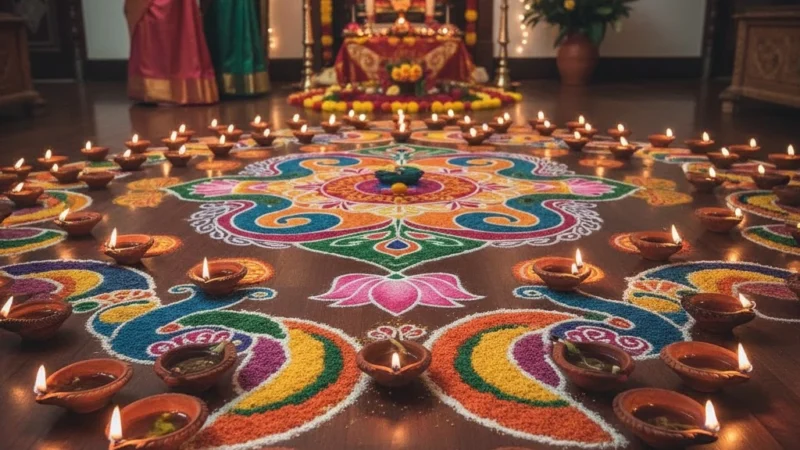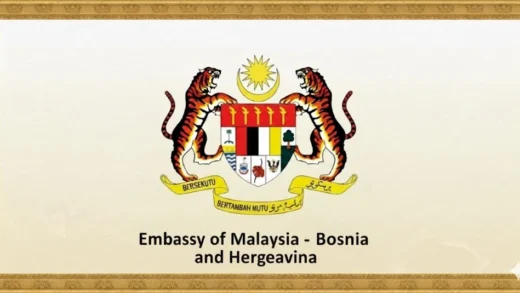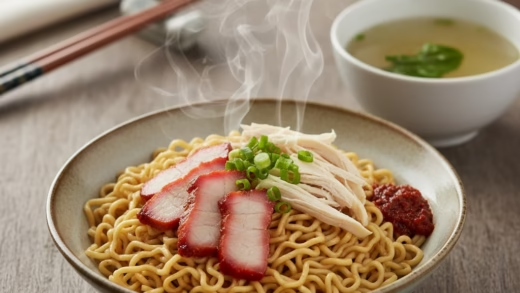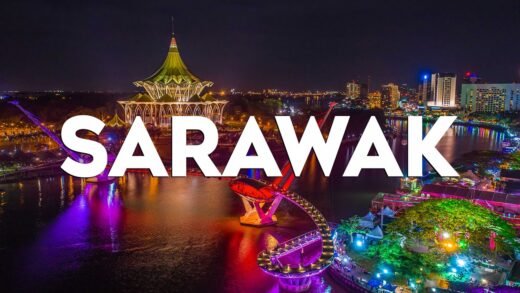The Symbolism of Diyas and Rangoli in Malaysian Deepavali

Deepavali, also known as Diwali, is one of the most significant festivals for the Malaysian Indian community. Celebrated as the Festival of Lights, it symbolizes the triumph of light over darkness, knowledge over ignorance, and good over evil. In Malaysia, Deepavali traditions have evolved over generations, blending ancient Indian customs with local cultural influences. From illuminating homes with diyas to creating intricate rangoli designs, the festival is a vibrant celebration of heritage, family, and community.
Origins and Evolution of Deepavali in Malaysia
The origins of Deepavali in Malaysia trace back to the arrival of Indian immigrants, primarily Tamil-speaking Hindus, during the British colonial era. Initially, the festival was celebrated within Indian households and temple communities. Over time, Deepavali has grown into a nationwide celebration, recognized as a public holiday and embraced by diverse communities. This evolution reflects Malaysia’s multicultural fabric, showcasing the harmony of religious and cultural traditions across the country.
Long-tail keyword usage: Malaysian Deepavali history and culture, Deepavali traditions in Malaysia
The Symbolism of Diyas
Lighting the Path of Prosperity
Diyas, or small oil lamps, are central to Deepavali celebrations. Lighting these lamps symbolizes the victory of light over darkness and the dispelling of ignorance. In Malaysian homes, rows of diyas adorn windowsills, entrances, and altars, welcoming prosperity, happiness, and divine blessings. Diyas also represent hope and positivity, reminding families to embrace goodness in daily life.
Long-tail keyword usage: Malaysian Deepavali traditions, Deepavali rituals in Malaysia
The Art of Rangoli
Welcoming Good Fortune Through Design
Rangoli, known locally as kolam in Tamil households, involves creating intricate patterns on floors using colored powders, rice flour, or flower petals. These designs are more than decorative art—they are believed to attract prosperity and ward off negative energies. Rangoli-making is a cherished family activity, often involving multiple generations working together to produce stunning, symmetrical designs.
Long-tail keyword usage: Deepavali decorations in Malaysia, Malaysian Indian festival celebrations
Regional Deepavali Celebrations in Malaysia
Penang
In Penang, particularly George Town’s Little India, Deepavali is celebrated with spectacular street lights, cultural performances, and communal feasts. The area transforms into a festival hub, attracting locals and tourists eager to witness the vibrant celebrations.
Kuala Lumpur
Kuala Lumpur features a combination of traditional temple rituals and urban festivities. The Sri Mahamariamman Temple, the oldest Hindu temple in the city, is the focal point for prayers, special ceremonies, and elaborate decorations during Deepavali.
Johor
Johor’s Indian communities celebrate Deepavali with family-centered rituals, cultural programs, and community gatherings. Local streets are illuminated with lamps, and traditional performances are organized in temples and public spaces.
Ipoh
In Ipoh, Deepavali blends modern and traditional customs. Homes are adorned with diyas, rangoli designs decorate entryways, and temples host community prayers and cultural events, creating a sense of unity and festivity.
Long-tail keyword usage: where to celebrate Deepavali in Malaysia, regional Deepavali celebrations Malaysia
Temples: The Heart of Malaysian Deepavali
Batu Caves
Batu Caves in Selangor is one of Malaysia’s most iconic Hindu sites. During Deepavali, devotees flock to the caves to offer prayers to Lord Murugan, participate in rituals, and witness the temple illuminated with thousands of lights.
Sri Mahamariamman Temple
In Kuala Lumpur, the Sri Mahamariamman Temple becomes the center of Deepavali celebrations. Founded in 1873, it is adorned with vibrant decorations, flowers, and diyas, while devotees perform rituals and offer prayers for wealth, health, and prosperity.
Traditional Foods and Sweets
Deepavali is synonymous with feasting. Families prepare an array of traditional foods such as sambar, murukku, laddu, and barfi. Sharing sweets with friends and neighbors embodies the spirit of generosity and joy. These culinary practices also preserve cultural heritage, connecting generations through taste and tradition.
Long-tail keyword usage: Deepavali foods in Malaysia, Malaysian Indian festival foods
Family Customs and Practices
Family plays a central role in Malaysian Deepavali celebrations. Homes are thoroughly cleaned and decorated to invite Goddess Lakshmi, the deity of wealth. Family members wear new attire, exchange gifts, and engage in prayer rituals. The festival fosters bonding, strengthens traditions, and reinforces communal ties.
Conclusion
Malaysian Deepavali is a festival that beautifully intertwines light, art, culture, and community. Diyas illuminate homes, rangoli reflects artistic heritage, and temples like Batu Caves and Sri Mahamariamman Temple serve as spiritual anchors. Through vibrant celebrations, traditional foods, and communal rituals, Deepavali continues to preserve the rich cultural tapestry of Malaysian Indians, making it a festival of joy, prosperity, and unity.





Comments are closed.